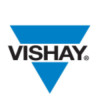Kurse werden geladen...
Prognose
Das durchschnittliche Kursziel der Analysten beträgt 21,23€(+67,30%). Der Median liegt bei 21,23€(+67,30%).
| Kaufen | 4 |
| Halten | 4 |
| Verkaufen | 2 |
Scoring-Modelle
| Dividenden-Strategie | 8 / 15 |
| HGI-Strategie | 6 / 18 |
| Levermann-Strategie | -5 / 13 |

News Zum News-Feed
Vishay Intertechnology präsentiert neue Dünnschicht-Chip-Sicherungen S2F und S3F
Vishay Intertechnology hat zwei Serien Dünnschicht-Chip-Sicherungen (S2F: flink, S3F: superflink) für den Sekundärschutz vorgestellt, die bei minimalem Widerstand zuverlässige Unterbrechungen bei Überlast bieten. S2F löst bei 200 % Überlast in <1 Minute aus, S3F in <5 Sekunden; erhältlich in Baugrößen 0402, 0603 und 1206 für Nennströme von 0,315 A bis 7 A. Beide Serien sind UL 248-14-konform, bleifrei, halogenfrei, RoHS-konform und halten die Gehäusetemperatur bei Volllast unter 75 °C. Muster und Produktionsmengen sind ab sofort lieferbar, Lieferzeit rund 16 Wochen.» Mehr auf de.investing.com
Vishay Intertechnology bringt AEC-Q200‑qualifizierten NTC‑Thermistor im 0402‑Format
Vishay Intertechnology stellt den glasgekapselten NTC‑Thermistor NTCS0402E3104XT in der Baugröße 0402 vor, der die Automobilnorm AEC‑Q200 erfüllt. Das Bauteil hat R25 = 100 kΩ, B25/85 = 4311 K, Toleranzen bis ±1%, einen Messbereich von −55 °C bis +150 °C sowie eine ESD‑Festigkeit >25 kV und ist für typische Automotive‑Anwendungen wie LED‑Module, Steuergeräte und Batteriepakete vorgesehen. Muster und Produktionsstückzahlen sind ab sofort mit einer Lieferzeit von 13 Wochen erhältlich; ein SPICE‑Modell steht zur Designintegration bereit.» Mehr auf de.investing.com
Vishay: Umgebungslichtsensor VEML4031X00 gewinnt AspenCore-Preis
Vishay erhielt für seinen AEC-Q100-qualifizierten, rechteckigen Umgebungslichtsensor VEML4031X00 den 2025 AspenCore World Electronics Achievement Award in der Kategorie Sensor. Das kompakte Bauteil integriert Umgebungslicht- und IR-Fotodiode, deckt 0–172.000 lx ab, entspricht der spektralen Empfindlichkeit des menschlichen Auges und ist für platzkritische Automotive-Displays ausgelegt. Die Auszeichnung fällt zusammen mit einem kürzlichen Aktienanstieg von Vishay; das Unternehmen meldete zudem neue 1200‑V SiC-MOSFET-Module, ein 1500‑V-Halbleiterrelais und IATF-16949-Zertifizierung für sein Werk in Gomez Palacio.» Mehr auf de.investing.com
Historische Dividenden
Alle Dividenden KennzahlenUnternehmenszahlen
| (EUR) | Sep. 2025 | |
|---|---|---|
| Umsatz | 675,61 Mio | 2,61% |
| Bruttoeinkommen | 131,47 Mio | 2,68% |
| Nettoeinkommen | −6,73 Mio | 61,05% |
| EBITDA | 67,25 Mio | 107,94% |
Fundamentaldaten
| Metrik | Wert |
|---|---|
Marktkapitalisierung | 1,73 Mrd€ |
Anzahl Aktien | 135,57 Mio |
52 Wochen-Hoch/Tief | 16,82€ - 8,79€ |
Dividendenrendite | 2,75% |
Dividenden TTM | 0,35€ |
Beta | 1,14 |
KGV (PE Ratio) | −26,73 |
KGWV (PEG Ratio) | −1,93 |
KBV (PB Ratio) | 0,98 |
KUV (PS Ratio) | 0,68 |
Unternehmensprofil
Vishay Intertechnology, Inc. produziert und liefert diskrete Halbleiter und passive elektronische Komponenten in Asien, Europa und Amerika. Das Unternehmen ist in sechs Segmenten tätig: Metall-Oxid-Halbleiter-Feldeffekttransistoren (MOSFETs), Dioden, optoelektronische Komponenten, Widerstände, Induktivitäten und Kondensatoren. Das MOSFET-Segment bietet Nieder- und Mittelspannungs-TrenchFET-MOSFETs, Hochspannungs-Planar-MOSFETs, Hochspannungs-Super-Junction-MOSFETs, integrierte Leistungsschaltungen und Leistungsbauelemente mit integrierten Funktionen. Das Segment Dioden bietet Gleichrichter, Kleinsignaldioden, Schutzdioden, Thyristoren/siliziumgesteuerte Gleichrichter und Leistungsmodule. Das Segment Optoelektronische Bauelemente enthält Standard- und kundenspezifische optoelektronische Bauelemente, wie z.B. Infrarot (IR)-Sender und -Detektoren, IR-Fernbedienungsempfänger, Optokoppler, Halbleiterrelais, optische Sensoren, Leuchtdioden, 7-Segment-Anzeigen und IR-Datentransceiver-Module. Das Segment Widerstände bietet Widerstände an, die als Basiskomponenten in verschiedenen Formen elektronischer Schaltungen zur Einstellung und Regulierung von Spannungs- und Stromwerten verwendet werden. Das Segment Induktivitäten bietet Induktivitäten zur Verwendung als internes Magnetfeld zur Änderung der Wechselstromphase und als Widerstand gegen Wechselstrom. Das Segment Kondensatoren bietet Kondensatoren an, die Energie speichern und bei Bedarf entladen. Das Unternehmen vertreibt seine Produkte unter den Marken Siliconix, Dale, Draloric, Beyschlag, Sfernice, MCB, UltraSource, Applied Thin-Film Products, IHLP, HiRel Systems, Sprague, Vitramon, Barry, Roederstein, ESTA und BCcomponents. Das Unternehmen beliefert Endmärkte in den Bereichen Industrie, Computer, Automobil, Konsumgüter, Telekommunikation, Stromversorgungen, Militär, Luft- und Raumfahrt und Medizin. Vishay Intertechnology, Inc. wurde 1962 gegründet und hat seinen Hauptsitz in Malvern, Pennsylvania.
| Name | Vishay Intertechnology |
| CEO | Joel Smejkal |
| Sitz | Malvern, pa USA |
| Website | |
| Sektor | Informationstechnologie |
| Industrie | Elektronische Geräte, Instrumente & Komponenten |
| Börsengang | 11.06.2021 |
| Mitarbeiter | 22.700 |
Ticker Symbole
| Börse | Symbol |
|---|---|
NYSE | VSH |
Frankfurt | VHY.F |
Düsseldorf | VHY.DU |
SIX | VHY.SW |
München | VHY.MU |
Assets entdecken
Shareholder von Vishay Intertechnology investieren auch in folgende Assets













